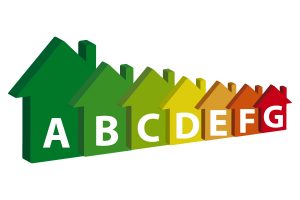Want to know what the conveyancing process entails? Daniel Chard, partner at Bird and Co. conveyancing solicitors, takes you through the process a step at a time
 Whether you’re a first-time buyer or have been on the property ladder for decades, buying a house is never simple. That said, one thing sure to make it a bit easier will be enlisting the help of a conveyancing solicitor.
Whether you’re a first-time buyer or have been on the property ladder for decades, buying a house is never simple. That said, one thing sure to make it a bit easier will be enlisting the help of a conveyancing solicitor.
The question is, what exactly will they be able to help you with and what will their process entail? Here’s a lowdown of the process, step-by-step to give you an idea of how it all works…
Step 1: Instructing Solicitors
So, you’ve agreed to buy a house – what’s next? Well, both you and the seller will need to instruct your respective solicitors on the acceptance of the offer to begin the conveyancing process.
You can sort out this part either before or after you agree on a house. Doing so sooner can speed up the process, and avoid you getting gazumped, which is when the seller accepts a higher offer on the property from another buyer.
Once you’ve instructed your solicitor on the agreement, they will ask you to send them some more information about the property.
They will also send you over their terms of business and terms of conditions so you can agree a contract with them. Once it’s all signed, they are now enlisted as your solicitor, ready for the next steps.
Step 2: Buyer admin
At this stage, you should have already applied for a mortgage offer in principle. Now, it’s time to apply for the mortgage properly in order to seal the deal. You can’t move forward with the signing of contracts without this.
It’s also time now to order a survey of the property. Depending on the type of survey, this will uncover any potential issues with the property that may need to be fixed, what work is required to fix them, the likely consequences of not fixing them and how much this might cost.
Step 3: ID Checks
Your conveyancer will carry out an identity check and proof of address on you and any other buyers.
This is so they can be sure you’re a UK citizen, and are a legitimate client. In most cases, this will involve you filling out a form with your address, National Insurance number, and so on, and supplying copies of your identity documents.
Step 4: Documents issued
This is when all relevant documents are issued. The seller’s solicitor will send a ‘Property Information’ form and ‘Fittings and Contents’ form to the seller for completion. These forms will include a lot of information about the property, and any changes that have taken place during the seller’s ownership.
Once these are completed, they will be sent to your solicitor along with the other contract papers.
This will include information about the title of the property and any documents referred to in the registers.
 There will also be other information depending on the specific property, for example extra information will be required for a leasehold property or new build.
There will also be other information depending on the specific property, for example extra information will be required for a leasehold property or new build.
If you’re dealing with estate agents, they will be responsible for circulating any transaction details to everyone involved in the form of a Memorandum of Sale. They will also send the Energy Performance Certificate (EPC).
At this point, your conveyancer may enquire about some of the specifics, and await an answer from the seller’s conveyancer. Or, they may make all these enquiries at once, after the searches have been completed, which we’ll discuss further below.
Step 5: Payment
Most solicitors will require an upfront payment from you in order to proceed with the next steps. This could be an entire lump sum of the fees, or a smaller chunk as a sort of deposit.
The average overall cost for conveyancing fees in the UK is around £1,000, and will depend on factors such as the complexity of the case and where your solicitor is based. For example, a conveyancer in London will typically be more expensive that those based outside the capital.
These first steps will normally happen within days, especially if you’re using an online conveyancing solicitor who can send and receive all documents remotely.
Other than this, it’s usually down to you how quickly you fill out any forms and send them back as to the speed of things.
Step 6: Searches will be ordered
Next up are the searches. These are reports which contain information about the property such as:
- Ground stability
- Flood risk
- Radon levels in the vicinity
- Local search to check things like the property’s planning history
- Drainage search to check the property is connected to mains drainage and water
- Other property specific searches, such as a coal mining search
You can create a list prior to these searches taking place to help you get exactly what you need from this. These searches will normally take a few weeks to come through.
During busier times, like now, you could be waiting even longer. What’s more, if you’re in a property chain, the searches will need to be carried out throughout the chain too, so this can take a while.
That said it’s really important that this step is performed thoroughly. Generally, it can help the buyer get a full picture of the property before jumping right in with the purchase.
Step 7: Enquiries
Once all the searches have been carried out, your solicitor will raise any relevant enquiries with the seller’s solicitor and send you a report and see if you have any queries. This helps you to get a full picture of the property prior to purchase.
Step 8: Help-to-Buy ISA closure
This step isn’t for everyone, only for first-time buyers who are using the Help-to-Buy ISA to fund part of their home purchase. This was scrapped last year so only those who began saving with the scheme before it was pulled will be able to use this.
If this applies to you, it’s at this stage where you’ll have to prepare for the closure of your account, as you’ll no longer be permitted to save here once the sale has completed.
This will require you to fill out some forms as a declaration from you that you wish to use the money for this home purchase.
Step 9: Exchange of contracts
It’s at this point that each solicitor will prepare a contract and exchange them with one another.
 Normally, this involves the two parties’ respective solicitors reading the contracts out to each other over the phone to check that they are identical. The solicitors will then exchange their respective copies by posting them to each other.
Normally, this involves the two parties’ respective solicitors reading the contracts out to each other over the phone to check that they are identical. The solicitors will then exchange their respective copies by posting them to each other.
This is when the deposit for the home will be paid, which will need to be completed by every member of the property chain, one by one.
This is also when the completion date is agreed by all parties too. This should only be agreed once building insurance has been applied for, otherwise you might be at risk of something happening to the property mid-exchange.
Normally, this takes around two weeks to complete, but can take longer or shorter depending on what the property chain looks like.
Step 10: Transfer of property
It’s at this stage where your solicitor will have to prepare a Transfer of Property document, if this has not already been done. This is the legal transfer of the property to you as the buyer, and will be approved by the seller’s solicitor, and signed by both you and the seller.
You will also agree with your mortgage provider, at this stage, to send your full loan to your conveyancer. Here, you will sign a mortgage deed, declaring that your money will be handed over to the seller on legal transfer of the property.
With this, your solicitor will have to send over a report containing your mortgage details. The Mortgage Company will provide the information for this, and provide the Mortgage Advance, which should be sent over a few days before the agreed completion date.
The buyer’s solicitor will also make the final Land Registry and Land Charges searches. They will also ensure any outstanding mortgage of the seller is paid before completion.
Step 11: Completion
The completion date – when the property is legally handed over to you – will normally be agreed for around two to four weeks after the exchange of contracts. This is the date in which the parties move and must be agreed with all members of the property chain so there are no clashes.
Once all the deposits have been received, the Seller or their Estate Agent will “release” the key to the house.
Step 12: After completion
Once the home is within reach, it’s not over yet. Now, your solicitor will report to HM Revenue & Customs and send any Stamp Duty due. They should then receive a certificate from HMRC, so they can then register the buyer’s title at the Land Registry. This can take a little while but is purely an administrative step.
You will need to contact the council and utility companies to ensure that all Council Tax and utilities are registered under your name.
Ready to instruct your conveyancer?
As you can see, there’s a lot that goes into the buying and selling of a property. Of course, you could very well deal with all of this yourself but, considering how much it all entails, instructing a conveyancing solicitor is a no-brainer.
If you’re looking for a cost-friendly and efficient conveyancing solicitor to help you through your home purchase, Bird and Co. are happy to help. Simply head to birdandco.co.uk for more information.
Good luck with your home purchase!
Daniel Chard is a partner at Bird and Co. conveyancing solicitors














